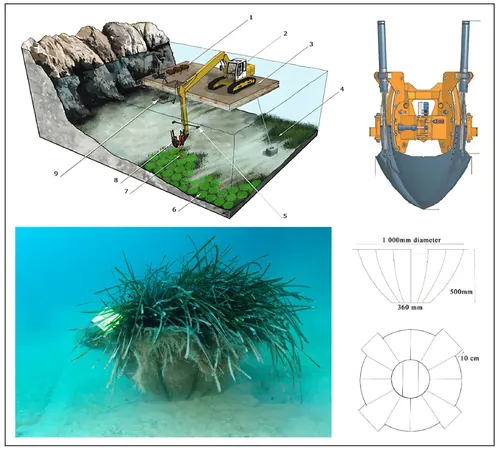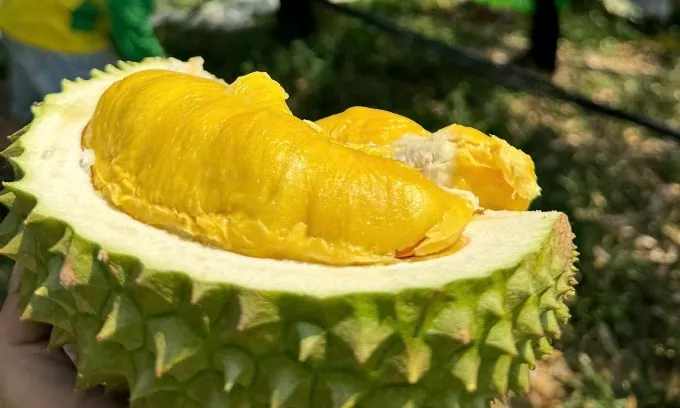
Why Transplanting Seagrass Could Save Our Oceans: A Groundbreaking Success in Monaco
2025-04-10
Author: John Tan
A Revolutionary Seagrass Transplant Experiment in Monaco
In a groundbreaking study, researchers achieved the successful transplant of 384 square meters of Posidonia oceanica seagrass—a vital organism in the Mediterranean ecosystem—challenging the long-held belief that such ecosystems are beyond the scope of transplantation. Conducted over the course of an ambitious eight-year project in Monaco, this experiment sets a new benchmark for seagrass conservation amidst growing threats from coastal urbanization.
Tackling Urbanization's Impact on Seagrass
As part of Monaco's ambitious "Mareterra" district development, several hectares of precious seagrass meadows faced destruction. To mitigate this impact, the research teams from Andromède Océanologie and the University of Liège initiated a large-scale transplantation operation, marking an unprecedented approach.
Innovative Methods Yield Promising Results
Beginning in 2017, the transplantation involved relocating seagrass from a construction zone to the protected Larvotto marine reserve. Utilizing a "clod" transplantation technique that preserved the plants' roots and substrate, researchers significantly improved survival rates. This method not only validated operational protocols for large-scale transplantation but also heralded a major advancement in preserving fragile marine ecosystems.
Remarkable Resilience and Growth
Dr. Sylvie Gobert from ULiège notes, "For eight years, we meticulously monitored the transplanted meadows' resilience. Despite significant maritime work nearby, the transplanted area thrived, with health indicators soon mirroring those of untouched natural meadows." Amazingly, both transplanted and native seagrass beds began to flower three years after the move, and by 2024, the transplanted area had grown by an impressive 25.8%.
Changing the Conservation Game
This pioneering experiment transforms our approach to seagrass conservation in coastal developments. Historically, the destruction of seagrass was deemed irreversible, often compensated only by artificial reefs. This study suggests that transplantation should now be considered a viable and ecologically beneficial strategy in environmental conservation.
Expertise Behind the Success
Led by the University of Liège, whose team includes marine ecologist Professor Gobert and doctoral student Arnaud Boulenger, the study benefitted from years of research expertise. The university’s Biological Oceanography Laboratory has been at the forefront of seagrass studies since the 1970s, providing invaluable insights into seagrass dynamics and conservation strategies through their long-term observations at STARESO, their underwater research station in Corsica.
A Vision for the Future of Marine Management
The success of this transplantation experiment is not just a scientific breakthrough; it also challenges existing marine management practices. According to Gobert, "By adopting transplantation as a mitigation method in coastal projects, we can significantly lessen environmental impacts while protecting vital Mediterranean habitats." This innovative approach promises not just to safeguard seagrass but to enhance biodiversity for generations to come.



 Brasil (PT)
Brasil (PT)
 Canada (EN)
Canada (EN)
 Chile (ES)
Chile (ES)
 Česko (CS)
Česko (CS)
 대한민국 (KO)
대한민국 (KO)
 España (ES)
España (ES)
 France (FR)
France (FR)
 Hong Kong (EN)
Hong Kong (EN)
 Italia (IT)
Italia (IT)
 日本 (JA)
日本 (JA)
 Magyarország (HU)
Magyarország (HU)
 Norge (NO)
Norge (NO)
 Polska (PL)
Polska (PL)
 Schweiz (DE)
Schweiz (DE)
 Singapore (EN)
Singapore (EN)
 Sverige (SV)
Sverige (SV)
 Suomi (FI)
Suomi (FI)
 Türkiye (TR)
Türkiye (TR)
 الإمارات العربية المتحدة (AR)
الإمارات العربية المتحدة (AR)